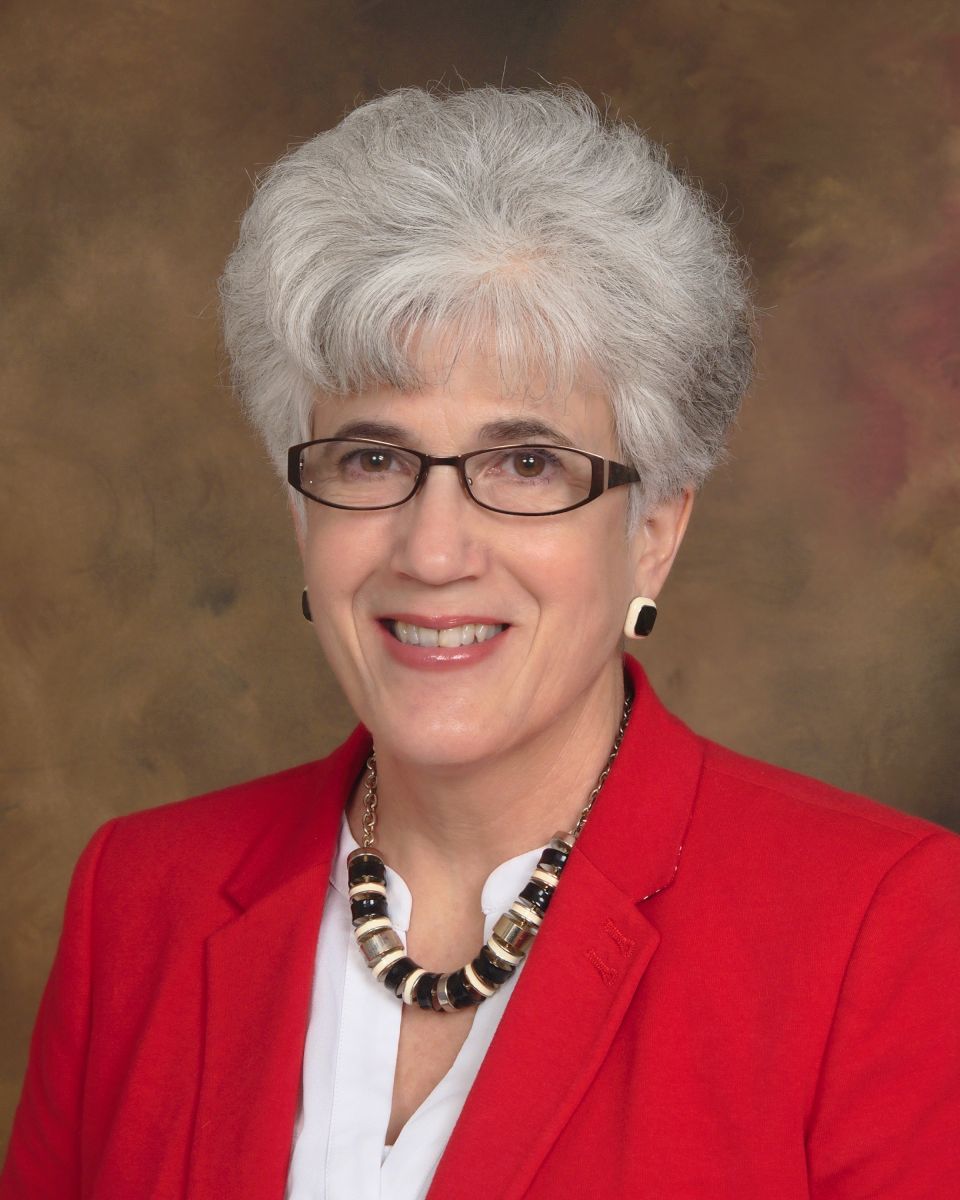You have /5 articles left.
Sign up for a free account or log in.

iStock
A regional accreditor recently denied an Arizona community college’s bid to increase its online degree offerings, with a decision that highlights challenges colleges may face when seeking to expand their online presence. In particular, the reviewers found a lack of required training for online instruction and a general lack of consistency. Meanwhile, success rates in Scottsdale Community College’s face-to-face courses stood at 75.2 percent, compared to 65.4 percent in online courses last fall.
This issue prompted several questions: How much standardization of course design, navigation, underlying technology and academic support (among other features) should an institution mandate -- and be required to mandate -- for its online courses? How should colleges and universities balance the potentially conflicting goals of ensuring that its distance education courses are student centered and of maintaining faculty control over course content? Is it appropriate for an accreditor to judge a college’s online offerings by the degree of standardization they reveal?
“Inside Digital Learning” reached out to several experts for their thoughts. Here's what they had to say.
 Deb Adair, executive director, Quality Matters
Deb Adair, executive director, Quality Matters
It’s true that institutions often struggle with the balance between faculty autonomy and mandated processes to ensure quality. The positions faculty and administrators take on this issue tend to be more about a lack of shared understanding of terms around which positions are taken. In principle, there is much agreement on doing the right thing for students. Better communication about the “right thing” is a place to start.
What is it, exactly, that should be mandated, and toward what end? To take the latter question first, an appropriate aim would be to increase student learning outcomes. Mandating practices strongly indicated by research to improve student outcomes is justifiable and desirable. Mandating practices developed for the purposes of efficiency and practicality in controlling quality and achieving institutional effectiveness is a decision best made by the institution and its internal stakeholders.
There is little shared understanding, and even some purposeful misunderstanding, around the definition of standardization. If by standardization we mean that all courses should have to meet the same research-supported and learner-centered criteria for quality and that the institution should have a quality-assurance process that can ensure that’s achieved, then let’s standardize by all means. If we mean that, from the perspective of an online course, standardization requires the very same look and feel for learners, then I am aware of no significant research that supports this.
Tools like course templates, which lead to greater standardization, can be practical for faculty and an efficient and effective way for institutions to ensure that quality criteria are met. The use of master courses is another tool to provide more standardization when there are multiple sections of the same courses. It’s cheaper and easier for the institution and, by definition, creates a consistent experience for the learner. Taken to scale, these things can lead to significant time and cost savings. Whether course templates and master courses create a better experience for students and faculty depends very much on the students and faculty and the institution’s capacity to evaluate and control quality in other ways.
The same is true for online training for faculty. What are the performance/knowledge criteria for online instructors and how are institutions ensuring these are met by all faculty? Clearly, professional development for online instruction supports faculty in achieving the criteria, but look for standardization in the process used to ensure faculty have achieved the criteria and not necessarily in a lockstep approach to faculty training.
If institutions identify clear, measurable, research-supported standards, and use a rigorous, consistent process to ensure all courses, instructors and support structures meet these standards, it doesn’t matter that courses have varying structures, faculty teach differently or support resources are customized. Standardization in these things isn’t necessary for quality.
There is, however, every reason to mandate a process by which the institution and its educators engage in consistent efforts to evaluate, assure and improve the quality of the education they provide to their students. To improve student outcomes, there can be no opt-out.
 Barbara Brittingham, president, Commission on Institutions of Higher Education at the New England Association of Schools and Colleges
Barbara Brittingham, president, Commission on Institutions of Higher Education at the New England Association of Schools and Colleges
The Higher Learning Commission’s decision to decline approval of a community college’s request to add 48 new online and certificate programs is, from the information available, entirely reasonable -- and illustrative of perceived tensions between faculty freedom and institutional consistency.
The tensions, however, are more apparent than real. While the article’s headline referred to “standardization,” the Higher Learning Commission team report as often used the term “consistency.” While it is easy to argue against overstandardization, reasonable consistency is a fair expectation. Note that HLC is not expecting “standardization” across institutions, only that the institution operates with reasonable internal consistency. Thus, other institutions may find different ways to be internally consistent and student oriented. There is no inherent contraction in being internally consistent in student-facing presentation and faculty control over objectives, method, content and assessment. And professional development for faculty members teaching online is a realistic expectation, provided that the offering is high quality and the institution supports faculty in that effort.
Ensuring that online courses are student centered and maintaining faculty control over course content are as compatible with online classes as with on-ground classes. Getting students actively involved, being available to engage and help students, and providing timely feedback are important in any modality.
While distance education is no longer new on the higher education landscape, it is still new to many adult and returning students. Ensuring that students find the modality easy to engage -- e.g., assurance of references to student support, consistency in LMS -- is a realistic expectation.
To its credit, and consistent with HLC expectations, the institution reported that student success in online courses is currently 10 percent lower (75.2 percent vs. 65.4 percent) in online vs. on-ground courses. Such metrics help an institution monitor student success in various instructional settings, and it is reasonable to believe that the greater consistency can be expected to help close this gap.
Regional accreditation is a system of self-regulation. While HLC declined to approve the change in question, the institution will revise and resubmit. While the back-and-forth reported here between the accreditor and an institution submitting a substantive change is unusually public, it is not out of the norm.
Over all, this development provides useful insight into how a regional accreditor can work positively with an institution proposing an important change in how it serves students and the public.
 Martin Kurzweil, director of educational transformation, Ithaka S+R
Martin Kurzweil, director of educational transformation, Ithaka S+R
When the Higher Learning Commission recently declined to accredit Scottsdale Community College’s new suite of online degree and certificate programs, it relied on three primary justifications: that the success rate in existing online courses was lower than the rate in face-to-face courses, that there was a lack of “standardization” in course design and pedagogy, and that the college’s internal quality-assurance process was inconsistently applied to its online programs.
This decision prompts two important lines of inquiry. First, are these valid considerations in the accreditation process, generally? And second, are these concerns more salient for online programs than face-to-face programs?
As I have argued in other contexts, student learning and progress, evidence-based instructional and support practices, and providers’ internal improvement processes should be the primary focus of accreditation review. HLC’s cited concerns are in line with those priorities.
There is perhaps more nuance to the issue of standardization than HLC’s reported rationale recognizes. From a student’s perspective, coherence in program offerings and consistently high-quality learning experiences across courses are important. Achieving those outcomes requires instructors to have consistent training and expectations for course design and pedagogical practices, and it requires that instructors within a program collaborate.
At the same time, effective instruction requires understanding and facilitating each student’s particular learning pathway, which in turn requires high motivation, flexibility and experimentation by individual instructors. A rote commitment to consistency may prompt complacent or misapplied instruction, not to mention a backlash.
Do these considerations play out differently for online than for face-to-face programs? In my view, the core principles are the same. Interestingly, though, the online context more often brings them to the forefront. Perhaps it’s the perspective of an institution or an accreditor considering a “new” program. Or the explicitness of decisions that have to be made in selecting and specifying the technology, designing the course and organizing the teaching of online courses. Or the massive amount of data that the online format makes available about instructors, students and the interactions among them. For each or all of these reasons, questions about student learning, instructional practice and quality assurance are more prominent and, in some ways, more easily addressed.
Online learning prompts these core educational questions beyond the context of accreditation. I’ve seen it in institutions with robust online offerings like the University of Central Florida and University of Maryland University College, and in projects working with faculty who are relatively new to teaching with technology, such as Ithaka S+R’s project with universities and community colleges in Maryland to design a hybrid, adaptive learning-based statistics course, and our support of the Council of Independent Colleges’ Consortium for Online Humanities Instruction.
In many cases, the work in online learning is a gateway through which the focus on course design, instruction, outcomes and quality assurance spreads to the institution’s broader educational endeavors. Perhaps the same dynamic will play out in accreditation.
 Leah Matthews, executive director, Distance Education Accrediting Commission
Leah Matthews, executive director, Distance Education Accrediting Commission
Accrediting organizations have a vital role in considering the significant expansion of an institution’s online educational offerings: to ensure that students are provided with educational programs that meet defined standards for quality and integrity. This role has never been more important. The rapid expansion of technology, equally fast-moving changes in the job market and the emergence of new career fields are pushing postsecondary education to keep pace with employer demands for skilled professionals while effectively expanding the personal and career horizons of our students. Forays into distance education offer truly exciting opportunities for expanding accessibility and affordability for both traditional and nontraditional students to an ever-broadening array of educational programs.
As the executive director of an accrediting organization focused on quality in online teaching and learning, I applaud colleges and universities that effectively leverage new technology and the vastly expanded access to content -- not just to make online courses and course work more engaging for students, but also to render them accessible and usable by students on schedules, in locations and at price points which allow students to pursue learning in ways that were previously unavailable to them.
In reviewing the expansion of online teaching and learning, accreditors are obligated to require effective instructional design and consistency of quality with the highest principles of pedagogy. Such expectations do not in any way diminish the significant role of faculty in developing curricula and course content. Rather, such expectations work in tandem with course content development to offer a comprehensive academic experience to the learner.
Requiring colleges and universities to meet quality expectations is not about standardization; it is about striking a balance between supporting improvement and implementing accountability measures where deficiencies are identified. For example, when reviewing an online program, it is entirely appropriate for an accreditor to evaluate whether:
- Curricula meet not only academic standards of scope and content, but are clearly mapped against student outcome goals and developed using instructional precepts tailored for online teaching and learning.
- Learning management systems are sufficiently robust to support effective student learning and student-faculty interaction, as well as continuous and reliable online access to libraries and other learning resources.
- Faculty are evaluated not just for their academic and teaching expertise, but for their ability to engage with students on a remote basis, their commitment to being available to students through multiple forms of communication and across more flexible time frames, and their experience in teaching and assessment across a broader range of abilities and learning levels in a distance education environment.
- Learning management software platforms support measurable and observable engagement by students in course materials, effective communications between faculty and students, the opportunity for social networking among students, and broad access to academic resources.
Online teaching and learning continue to foster an ever-expanding diversity in educational models, student populations, institutional missions, vocational and professional requirements, and emerging technologies. This is exciting! But the students’ experience must exist at the center of the enterprise with a common goal: to enrich their lives both personally and professionally.
Manfred F. Meine, professor of public administration, Thomas P. Dunn, associate professor of public administration, and Robert Abbey, associate professor of sociology, all from Troy University
The proliferation of standardization of online delivery methods has resulted in an emphasis on control of faculty (and subsequently of students) at the exclusion of emphasis on quality of instruction and content. Because online courses tended to focus mostly on written exchanges between students and with their instructors, a cottage industry focusing on innovative course design soon evolved, to include proactive efforts to artificially “spruce up” courses through audiovisual bells and whistles, even including calls for the use of large and easy-to-read fonts and a variety of attractive graphics and images to more directly appeal to the adult learner. Surprisingly, at least to some, live interaction is also being strongly encouraged and the practice is rapidly expanding despite its potentially negative impact on the asynchronous approach.
Even if all of the efforts of course designers are genuine attempts to be of service to faculty and, more importantly, to students, the mechanics of their doing so (course reviews, critiques, deadlines, workshops, webinars, etc.) are regarded by many faculty members as inappropriate or at least burdensome intrusions on their autonomy, and especially since there appear to be few, if any, similar intrusions on faculty who teach traditional, in-class courses. The emphasis has been placed more on a remote delivery of in-class courses rather than taking advantage of the myriad advantages of asynchronous online possibilities.
While this push toward standardization of courses in the online environment through course design might be an effort to make it easier for students to navigate the online environment, it should not serve as a substitute for quality, and should not be the basis for accreditors to judge programs. We should keep in mind that the technology involved in online learning can also be a barrier since it can easily become overwhelming for both students and faculty, especially as an ever-growing array of the aforementioned bells and whistles are introduced in an effort to make online courses more attractive to students, especially the adult learner.
Witness the proclivity for students to want to use their iPhones or equivalent rather than notebooks (iPads) or laptops or desktops. Although the mobile technology is becoming quite sophisticated, the gee-whiz instructional designers are now considering enhancing their course designs despite their limitations. Students these days are increasingly accepting texting or tweeting as writing and “finding” as research. Somewhere, somehow we have to return to humans having to think, not apps.
 Chris Millet, director of learning design, Penn State World Campus
Chris Millet, director of learning design, Penn State World Campus
Creating courses that effectively enable student learning should be the top priority of any institution that is engaged in online education. Of course there are always budgetary or other resource constraints that may necessitate the efficiencies that can come from standardization. And establishing a baseline level of quality will require some standardization, such as what is offered by Quality Matters. But it’s critical for an institution to understand what can and should be standardized and where faculty and instructional designers should be allowed the freedom to be creative in solving instructional problems.
One key to achieving this balance is in standardizing those elements of design where an individualized approach brings inconsistency that not only doesn’t contribute to learning but can actually interfere with it by confusing students or creating technical barriers. Students shouldn’t have to take on additional cognitive load adjusting to different navigation for every course. The syllabus and other critical information should always be located where they are expected to be.
An institution that has a well-developed education technology procurement process, especially one that involves faculty and students in a meaningful way, can adopt a finite set of tools that satisfactorily meet most common teaching and learning needs, again reducing the learning curve for students. This is particularly true regarding the selection of a learning management system for the institution. These are sensible places for standardization that free faculty and learning designers to focus on pedagogy, don’t infringe on faculty control and are common-sense enough that they don’t even have to be mandated. In fact, mandates can stymie innovation that is important for future growth.
Mandates should be reserved for enforcing core policies that protect students, faculty and the institution, such as those related to academic integrity or accessibility. Good communication, reasonable policies and faculty development programs can help build trust and a culture committed to quality online learning. A healthy learning design community within an institution, especially one whose members also participate in professional organizations like the Online Learning Consortium, can establish and encourage local best practices that further reinforce quality standards.
Flexibility and a minimal, sensible approach to standardization can allow an institution’s online programs to grow and evolve to meet the constantly shifting challenges of this field, while also satisfying an accreditor's expectations.
Matt Reed, vice president of learning, Brookdale Community College, Inside Higher Ed Confessions of a Community College Dean blogger
Reed wrote about this topic in his piece "Standards and Standarizations" published Sept. 19 in Inside Higher Ed. To read what he had to say, click here.

It has long been the AAUP’s position that the faculty has primary authority for curricular matters. The AAUP’s 1966 Statement on Government of Colleges and Universities (jointly formulated with the American Council on Education and the Association of Governing Boards of Universities and Colleges) puts it this way: “The faculty has primary responsibility for such fundamental areas as curriculum, subject matter and methods of instruction …”
While recognizing the distinct challenges of online education, the association has not shied away from asserting the same principle of faculty control. Its Statement on Online and Distance Education, for example, recommends that “the faculty should have primary responsibility for determining the policies and practices of the institution in regard to distance education. The rules governing distance education and its technologies should be approved by vote of the faculty concerned or of a representative faculty body, officially adopted by the appropriate authorities, and published and distributed to all concerned.”
With regard to the content of online courses, the Statement on Online and Distance Education recommends that “all programs and courses for academic credit that utilize distance education technologies should be considered and approved by the faculties of the department, division, school, college or university.” With regard to teacher preparation, the statement recommends provision of “adequate time to prepare [course materials] and to become sufficiently familiar with the technologies of instruction prior to delivery of the course,” even to the extent of providing “significant release time from teaching during an academic term prior to the offering of a new course.”
From an AAUP perspective, therefore, the question of standardization in online courses is ultimately one that is best left to the faculty and resolved through appropriate faculty governance procedures. As to student centeredness, the AAUP does not see any inherent conflict between courses being student centered and faculty control. In fact, our recommended policies are premised on the opposite assumption -- that faculty control promotes student learning.
Regarding accreditation, under the AAUP’s policies, accrediting bodies should consider the faculty’s role in formulating curricular policy, including in the area of digital learning, as a more fundamental criterion than degree of standardization.








